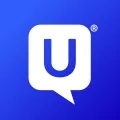
How to get stakeholders on board with accessibility

Accessibility is now absolutely imperative. Every digital company’s audience has now increased to include people of all abilities. If you’re not providing accessible, easy-to-navigate experiences for everyone, then you’re losing out.
But there are still practical considerations to make: you will still need a plan and a budget to work towards having an accessible website, and you will probably have to persuade someone to release that budget.
Here we’ll help you develop tactics to get your team and your stakeholders on board with accessibility by addressing cost, timeframe, tools to use, and understanding why it matters.
Accessibility facts
There are 5 main groups of disabilities: visual, auditory, motor, cognitive, and speech.
Visual impairments are most affected on the web due to the visual nature of looking at content on a computer screen. Motor impairments are also affected by users who may not have the dexterity to click on small buttons and links embedded in your content, or even use a keyboard.
26% of adults in the US have some type of disability, and many of them use the web. Having an inaccessible website automatically takes these potential users out of your actual audience group, which can mean decreased sales, higher bounce rates, or lower customer satisfaction. How can you prevent this?
For some, the web is their viewport into the world, so making your site accessible for those with disabilities is like opening a new office on Main Street for everyone to see and interact with.
Let’s look at the biggest factors as to why you may want to make your site or digital product accessible.
Everything you need to know about improving the accessibility of your digital products
Cost of accessibility
Let’s focus on 2 magic words: profit and ROI.
Due to the nature of accessibility testing, accessible sites are better for all your customers, with or without impairments. Think about audio-visual equipment on public transportation. Hearing the current and next stops spoken out-loud is helpful for people with visual impairments and people who can’t see the map from their seat.
A visual display of the map with subsequent stops is helpful for those who can’t hear the next stop announcement, whether they have a hearing impairment or if it’s just loud on the train. Having this extra information is more convenient for everyone, and this same is true for your website.

The more you plan ahead of time, the more money you can save by not having to fix things you thought were great, but ended up being an accessibility nightmare.
In a nutshell, you want to increase your customer value and save more money than you spend on retaining those customers. Since so many sites are inaccessible, having an accessible site automatically means you can provide more value than your competitors to a specific demographic.
If you want to avoid a financial loss, you can proactively build accessibility into your process so you don’t have to spend a large sum of money working through an accessibility audit, or worse—dealing with litigation due to inaccessibility.
Timeframe
How fast can you make your site accessible? Well, the answer to that question is going to be different for everyone. If you are still early in the development process, accessibility can be seamlessly built in to your current roadmap, which minimally extends your timeline. If you have a larger site that needs accessibility re-work done, it will take longer.
Start with an accessibility audit using free tools (more on that in the next section). Start by making your page templates accessible, and then evaluate individual pages and media files, like video or audio clips.
There are about 50 specific "success criteria" to meet to be AA compliant (the medium level), which is the industry standard recommendation. 50 might sound like a lot, but they are split across the three levels and there's a bit of overlap.
Don’t be surprised if it ends up taking you months to sort out all these issues. Pace yourself, aim to knock out the minimum requirements of level A issues first, then move on to the stricter level AA issues to meet industry standards for best practices.
Even if this is a lot of work upfront, remember that once you make your site accessible, you will have far less work to do in the future. An accessible site doesn’t become inaccessible over time if you maintain best practices in future releases, so you only need to do the heavy lifting once.
Tools
You may have heard of automated tools to help you with accessibility testing and make the process much easier. This is true, to a point. You can get tools that automatically scan your site to give you a high level overview of the current status of accessibility and identify where issues occur in your site. But due to the nature of the issues, they can’t automatically tell you if all issues pass or fail.
Two common issues are:
- Making sure all your images have an appropriate alternative text description so a screen reader can read out a description to a visually impaired user
- Checking for color contrast issues, which may have a huge effect on your brand color palette.
Automated tools can identify all the images on your site and see if they have alt text or not, but it’s up to you to check the quality and accuracy of each image description. Automated tools can identify low color contrast ratios, but you still need to figure out what colors will work better while maintaining brand consistency.
Accessibility testing takes time because it requires some hands-on manual testing. But this style of manual testing isn’t very different from your typical user experience testing. It’s really helpful to have a human do an assessment to find out what the issues really are.
If you have the capability, the best way to test your site is to have an actual assistive technology user (like a screen reader user) walk through the site and find issues based on their direct experience with the site.
The most helpful tools are ones that can identify where all the issues occur on your site, and tools that help organize issues to figure out which one’s you’ve addressed and to help prioritize. Best of all, many of these tools are free, plus you can most likely leverage your existing bug tracking software to see what you’ve completed so far.
Evaluation tools come in many different forms – everything from browser extensions to online services to automated reports, so make sure whatever tools you use are compliant with your company policies.
Why does accessibility matter?
Now more than ever, it’s important to make sure your information can be delivered to all your users.
Some success criterion address accessible concepts instead of specific code fixes. To get a good idea of why this matters, you can watch videos showing the perspectives of individuals who benefit from these fixes—whether it’s due to a permanent disability or a temporary situation.
Once you understand why you need to fix something to make it accessible, you’ll be able to identify an optimal solution based on the WCAG guidelines.
There are also legal reasons to be accessible. Websites in the US are covered under the ADA (Americans with Disabilities Act), so consider it a civic duty to make your site accessible.
Though many companies have put off this initiative, trends are quickly changing as more and more lawsuits against public companies arise. Being compliant means avoiding costly lawsuits, and shows a little philanthropy.





